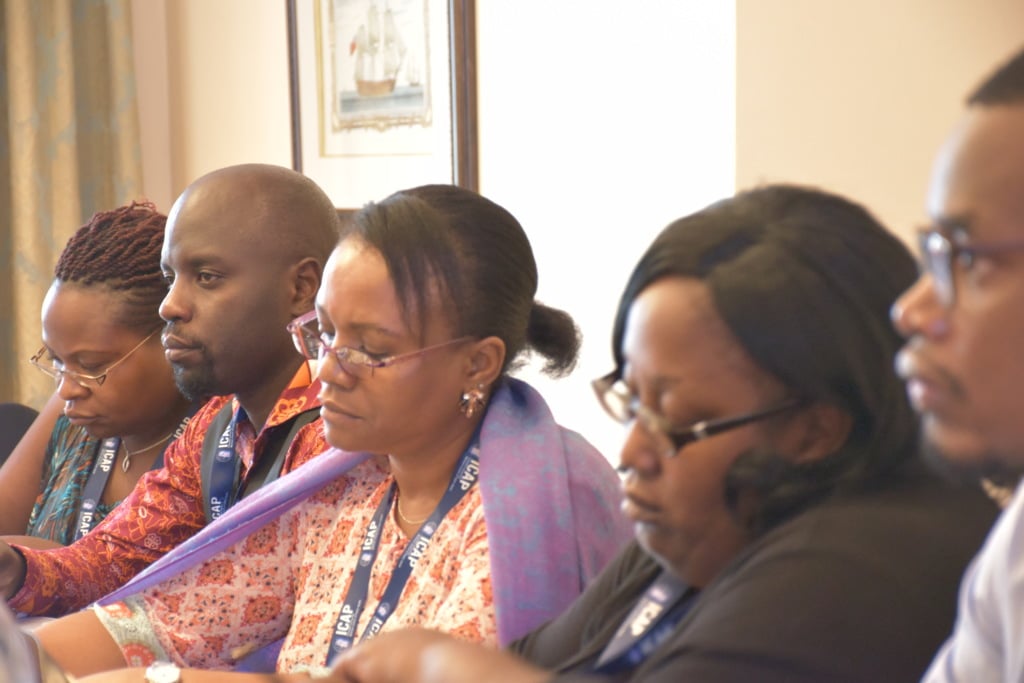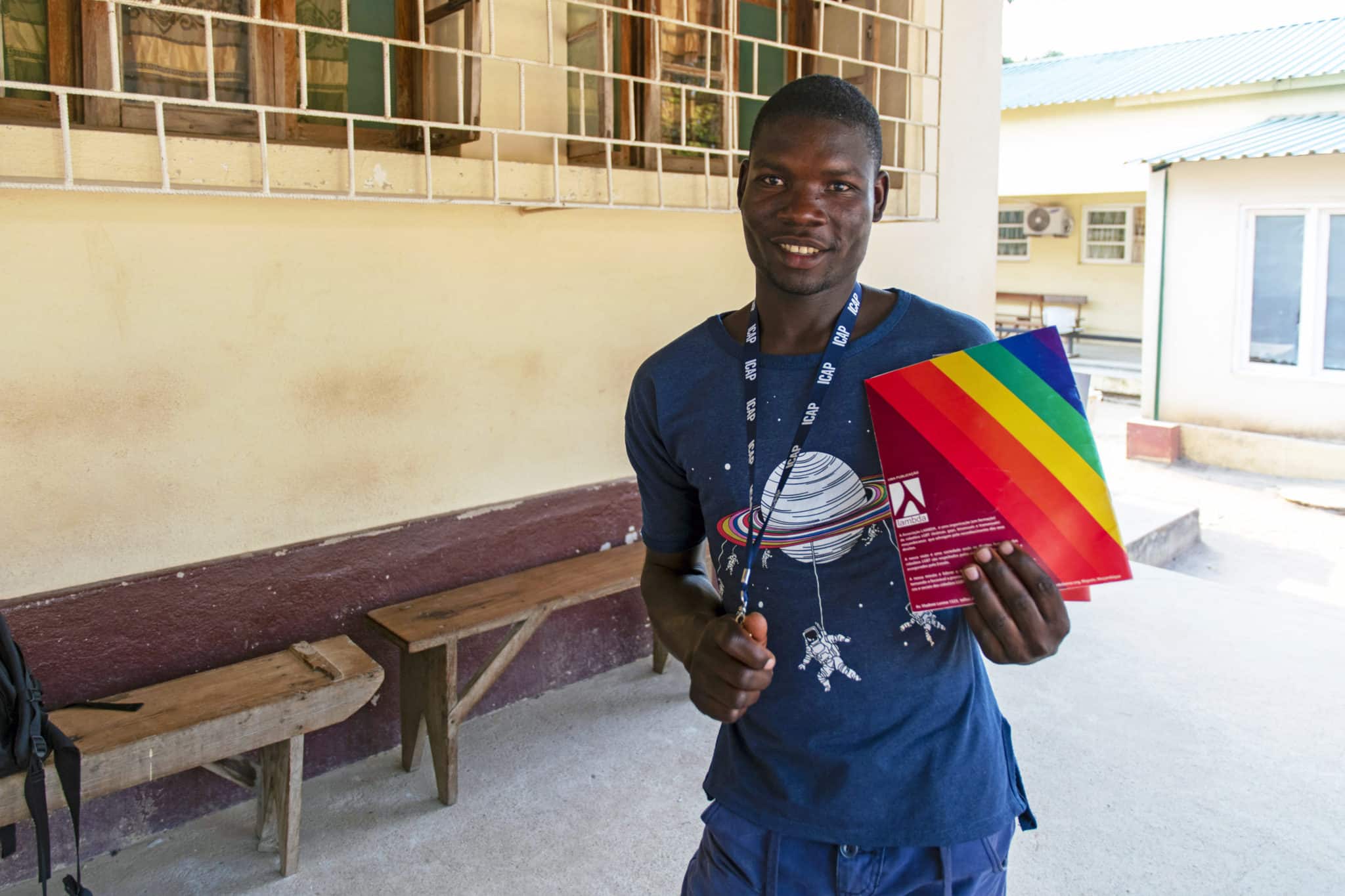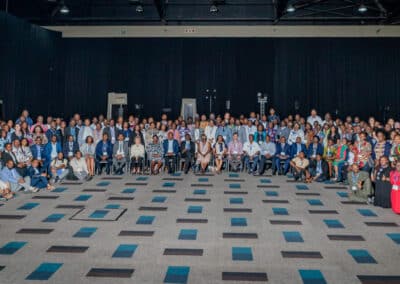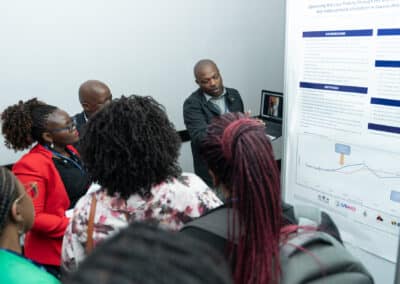As the Program Manager at ISHTAR MSM—a community-based organization in Nairobi, Kenya that advances sexual health rights of men who have sex with men (MSM)—Jeffrey Walimbwa advocates for the rights of marginalized groups to access health care, including diagnosis, care and treatment for HIV and other sexually transmitted infections (STIs). Mr. Walimbwa, an active member of the HIV Coverage, Quality, and Impact Network (CQUIN), got his start in community mobilization and advocacy when he joined ISHTAR in 2006. He now advocates for improved access to health services for MSM and other key populations in Kenya, and for high-quality differentiated service delivery (DSD) models.
In partnership with the Kenya Ministry of Health’s National AIDS & STI Control Programme (NASCOP), and with technical support from ICAP at Columbia, he’s conducting a survey to investigate barriers that community members face when they are accessing drugs or services at health facilities. ISHTAR has also received a grant from the International AIDS Society (IAS) to do community mobilization and work on a DSD strategy in Kenya.
How did you get involved in this work with ISHTAR and MSM?
I started working with ISHTAR in 2006, when I met our director, Peter Njane, along the streets of Nairobi and he convinced me to get tested for HIV. Together, we began reaching out to community members and peer educators, asking for them to get tested at a time when there were limited options for testing. We realized there are many HIV-positive people who didn’t know their status. That’s when we decided to do outreach. We do a one-week testing event for people in the city-center leading up to World AIDS Day each year; where I’ve learned that most of my friends are HIV positive. It was very scary, and it encouraged me to get involved in HIV programming.
How did you learn about DSD?
After the ICASA Conference in Cote d’Ivoire in 2017, I received an invitation from CQUIN to join their First Annual Meeting in Maputo, where I learned more about DSD and how it can help countries achieve the 90-90-90 targets. At the Science and Practice of Scale-up Meeting in Eswatini last June, I learned so much about the building blocks of DSD models while researching ways to scale up differentiated services for key population back home, such as home-based care and follow-up visits. At the Second Annual Meeting in Ethiopia this past November, there were many discussions about DSD for key populations, which drove me to think about how we can understand DSD in Kenya, and what organizations are doing this work.
After that, I reached out to IAS about doing a survey. They shared their questionnaire that focused on finding out more about organizations implementing HIV programming that are led by key populations. Through this survey, we’re reaching out to sex workers, people who inject drugs, and the MSM community to find out what’s really going on with DSD in Kenya in our communities. The CQUIN team is also going to provide technical assistance and research expertise. NASCOP has even agreed to help roll it out and form a technical working for key populations and DSD models.

Jeffrey Walimbwa, second from left, participates in a breakout session on community engagement at CQUIN’s first annual meeting in Maputo, February 2018.
What are your aspirations for your Differentiated Models of ART Delivery Survey, and why is there a need for such a survey in Kenya?
It’s important because most key populations, especially MSM and people who inject drugs, are still considered criminals in Kenya, so it’s been a challenge for them to access services. I’m doing a separate, qualitative study right now on barriers and facilitators on access to services for MSM and transgender women who have sex with men. One of the areas we did the survey was in Eldoret. One man I interviewed told me his story, that he was accessing his medication in Nairobi through ISHTAR, and when he moved to Eldoret, he couldn’t access services because he was scared. I talked to him about different ways he could access his medication. He took my advice and received the treatment he needed; he even has his next appointment set. This is just one example of how we’re starting to understand what the barriers are that our community members face when they want to access their drugs or services at any health facility.
Will there be any policy implications for DSD and MSM with such a survey?
Yes. It’s why I worked with NASCOP’s Technical Support Unit. They even told me that, before we went any further, we’d need to set up a technical working group for DSD for key populations—an entry point to creating DSD policies for these groups.
What are your thoughts on key population engagement in the planning and monitoring of DSD scale-up?
I think it’s important to involve them in all stages of planning and implementation. DSD is an elixir of hope for key populations because it offers convenient alternatives to access ART. We also need simplified information for communities so they can understand what we’re doing. It would be great if health care providers and professors can speak in a language we understand. At the last CQUIN Annual Meeting, there was a lot of discussion about language and making it simple so community members can relate.
The COP 2019 guidance mentions DSD for men specifically. Do you think this will help create opportunities for MSM and DSD in Kenya?
Yes, I think it will because that is going to deeply affect the national programming and create avenues for conversation. What we’ll need to do is ensure there’s enough advocacy around it, within communities and government.
How has CQUIN has helped ISHTAR to collaborate with partners in the planning and scale-up of DSD?
CQUIN has played a major role in giving out the information and creating a space for conversation. The first time I ever sat with and planned with senior leadership from NASCOP was at the first meeting I attended in Maputo. The opportunities I’ve had to attend and learn from those meetings have given me the power to think more broadly about what needs to be done if we’re going to make DSD a success for MSM and key populations. We had very meaningful conversations that helped them understand what it’s like to be an MSM and what the struggles and issues are that we face with health. ICAP in in Kenya has been instrumental in giving us guidance and reviewing the proposals we write. I reach out to them often when I need guidance on something. CQUIN has given us the information and an opportunity to understand and advocate for DSD at all levels.
Related Resources
IAS Decision Framework for Differentiated ART Delivery for Key Populations
Also available in French and Portuguese




